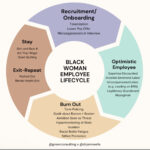By Dr. Sandra Miles
To put it simply, salary cloaking is the practice of excluding the salary from a job posting/position announcement. Pay transparency, on the other hand, is a movement to require that all positions share the salary ranges a qualified applicant can expect to earn for a given position.
Why Does This Matter? While it shouldn’t be misconstrued to be a silver bullet, posting salaries on job announcements, at a minimum, ensures that all applicants will be offered wages based on the position itself–not their gender, not their family size or head of household expectations, not their age, not experience, not their willingness or ability to negotiate, and not their previous salaries. This is important because many of the aforementioned conditions could be heavily impacted by race, gender, or culture.
This baseline would not prevent a savvy or confident job seeker from negotiating, but it would ensure that they are negotiating within a range that is reasonable for the task at hand, rather than being placed in a position to overcompensate for previous years of being underpaid.
For example, consider if a white man and a Latinx woman apply for the same position at a company that has two vacancies and there is no salary range listed. During the application process, the employer requests each applicant’s salary history – a company practice that is applied universally (click here to find out if this is legal in your state). If the employer then uses that information to simply match or offer 10% more than their current salaries, statistically speaking, the Latinx woman could be offered 20-30% less for the exact same role. Not based on the job they will be asked to do but based on years of systemic oppression that the hiring company would inadvertently be supporting – even if they had the budget available to create equity.
There are a small number of job boards, like HireEd Careers, that are prioritizing equity within the job board space. HireEd Careers holds its integrity as a diversity job board by educating job seekers and employers about the value of salary transparency; and rewards those who post salary ranges with a priority badge. One employer, SumOfUS, takes it a step further by banning negotiation, posting multiple positions at the same time, and offering a test that has blind reviews so they can truly match a person with the best position. The pay, of course, being linked to the position, not internal biases or your ability to negotiate. While higher education has seen the push for pay transparency increase over the past two years, the For Purpose Law Group reports that former nonprofit executive and blogger Vu Le has been advocating for pay transparency since as early as 2015. This issue is also not unique to these two industries. This problem is widespread, salary cloaking appears to be the rule and even reported improvements are still abysmal. According to CNN, only about 12% of position postings include salaries – an increase from 8% in 2019.
While more research is needed to confirm the long-term impact of pay transparency, the Chronicle of Philanthropy sites at least one study that suggests that “compensation disclosure laws applied to Canada’s Public Sector reduced the roughly 7 percent gender wage gap among faculty at universities by about a third.” This finding is great news for those in support of the pay transparency movement and, more importantly, in support of pay equity. While many institutions promote and value diversity, many also view those values as belonging to one specific office or various demographics of people. The reality is that participating in pay transparency can be one on a long list of institutional shifts that would embed equity and inclusion in your practices and offer an accountability measure that no one person or group on campus has to be responsible for maintaining.
Though pay transparency impacts industries across the globe, what seems to be unique in higher education is that once salaries are posted, there is realization that staff doing the same work make significantly more or less depending on their department. Salaries in higher education, much like K-12 education, vary based on where you work and are low compared to the private sector. A primary difference in higher education being that rather than making one nonpareil in their field, having a master’s degree as a college employee is an equalizer. Beyond pay transparency, there may need to be a re-evaluation of preparation programs for faculty and career administrators.
For example, something as simple as offering a bachelor’s degree in higher education administration could serve to quiet the cries of those who believe that, even though all or the vast majority of their fellow job applicants and future colleagues also have master’s degrees, their master’s entitles them to salaries that cannot be accommodated by current budgets. Budgets that have limitations due to both campus values and state appropriations.
Another example would be pay differentials among administrative staff who report to Deans. If the overall budget for the College of Medicine is larger than the overall budget for the College of Arts and Sciences, is it fair that staff doing the same jobs make different salaries? On the one hand, it is not fair because the work is the same. On the other hand, literally every other segment of our campuses operate in the same fashion. VPs don’t all make the same salary even though they are all VPs. Faculty don’t all make the same salary even though they are all professors. If we believe that 1+1 must always equal 2, then what does that mean for other parts of campus. But, if we are capable of recognizing the nuanced differences between comparing VP salaries to administrative support salaries, then why can’t we articulate it and make different choices? If we truly care about equity (in pay and beyond), then we must grapple with the reality that pay transparency isn’t about simply letting current and potential employees know the salary, it’s about taking an intentional look at our values, our pay, and our processes to ensure alignment, support for the whole person, and the capacity to actually identify problems where we did not previously realize they existed. Leadership requires hard choices and a capacity to solve real problems – but you can’t fix what you won’t face.
For more information about how to be an equitable leader, consider reading Courageous Gardening: Equity-Minded Leadership in Higher Education. This book offers the opportunity for senior leaders to be introspective without judgment and includes an entire chapter dedicated to inclusive hiring practices.







